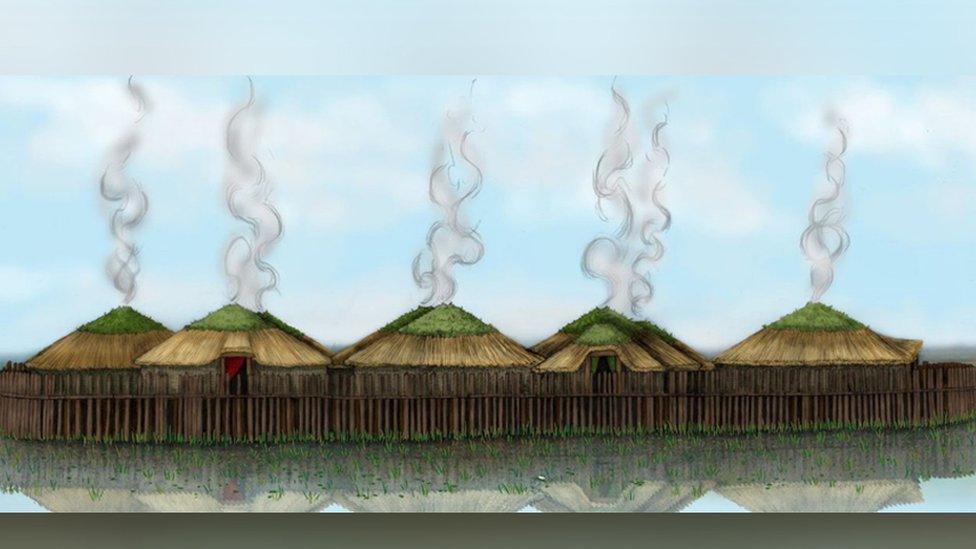Iranian glass beads found at 'UK's Pompeii' near Peterborough
- Published

All the glass used in the beads found at Must Farm travelled considerable distances from their places of manufacture, which was probably what is now Iran
The glass used to create beads discovered at a prehistoric settlement dubbed "Britain's Pompeii" was probably made in Iran, analysis has revealed.
The finds were among a wealth of well-preserved items unearthed at a burnt-out 3,000-year-old village at a quarry in Whittlesey, near Peterborough.
Amber, shale, siltstone, faience and tin beads were also discovered.
Prehistoric jewellery expert Alison Sheridan said their survival, at Must Farm, was "absolutely thrilling".
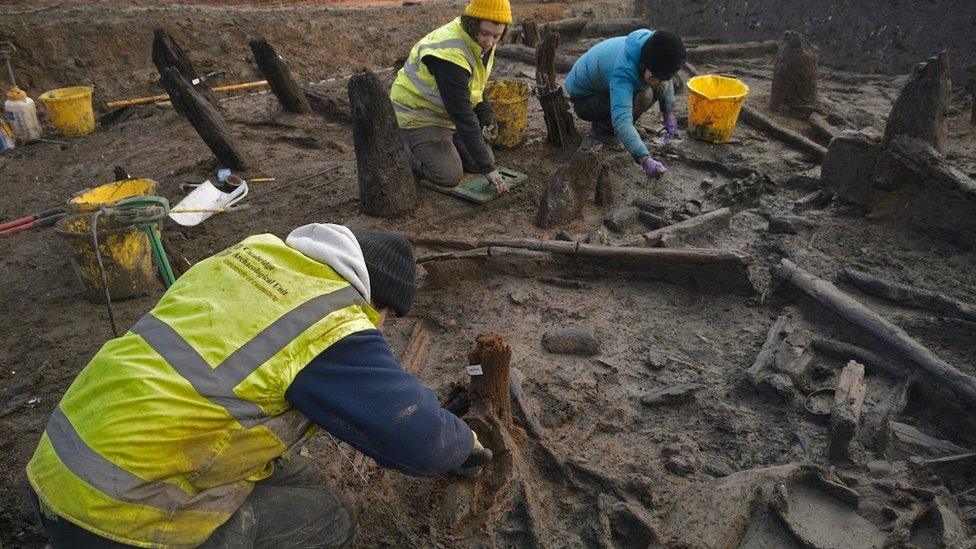
The Must Farm site has been described as "an amazing time capsule" by archaeologists - wood that was not destroyed by fire was preserved in the silt
They reveal the "really cosmopolitan connections" of Must Farm's residents, according to Dr Sheridan.
"Some of the beads must have been got from northern Britain and possibly even Ireland, while the glass came from a very, very long way away across the sea," she said.
The remains of a settlement of about 10 circular wooden houses on stilts built above a river was discovered by the Cambridge Archaeological Unit between 2015 and 2016.
Believed to be home to 50 to 60 people, the cause of the fire that destroyed it in 850BC is unknown. The settlement and its contents were preserved because it fell into silt in the river.
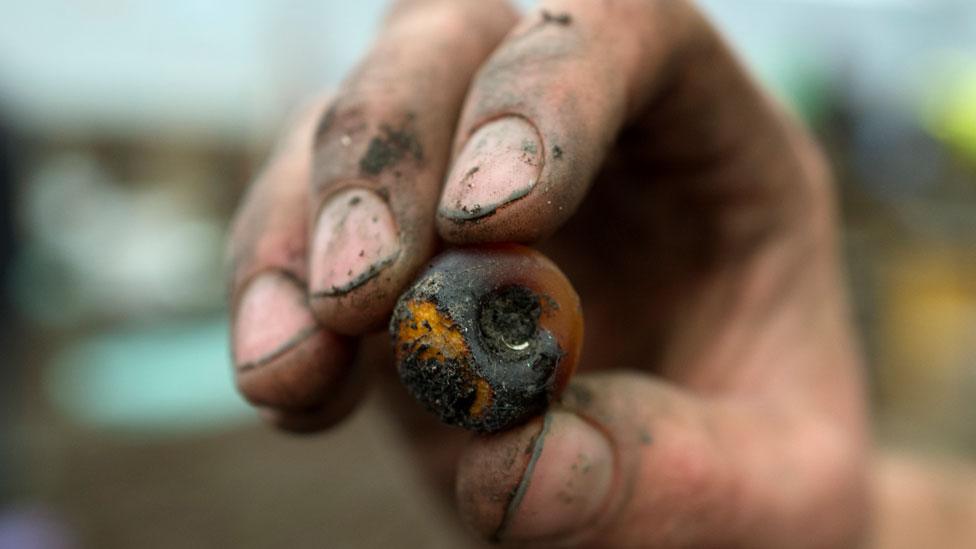
An amber bead, which was probably created in Ireland, was "only slightly charred" in the blaze
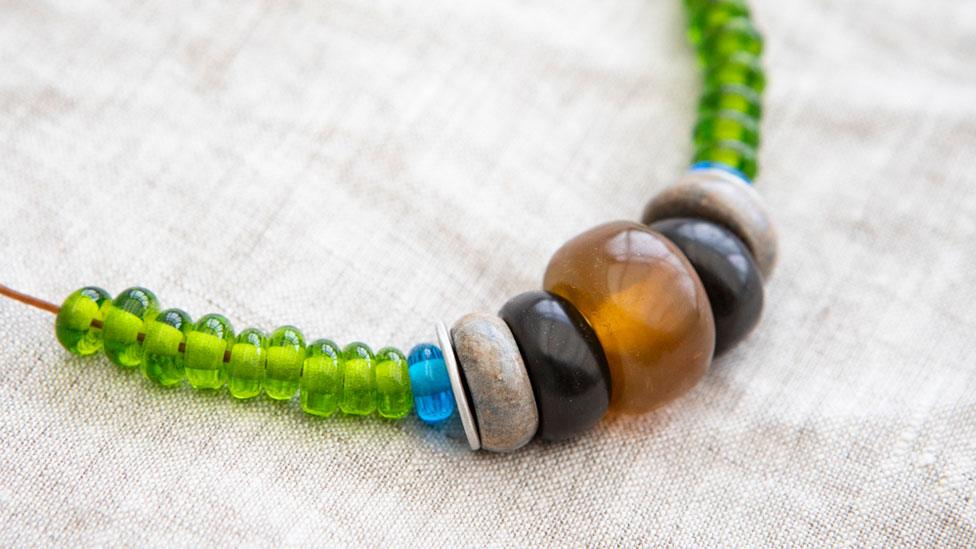
Emma Jones, from AncientCraft, was commissioned to make replicas of the surviving beads, seen here with a few additional beads
This included "by far the largest find of glass beads from any Late Bronze Age context in Britain," according to Dr Sheridan and co-author Julian Henderson.
They contributed to the necklace and beads report as part of the post-excavation analysis, external published by the McDonald Institute for Archaeological Research.
Prof Henderson, an expert in ancient technologies at Nottingham University, concluded the glass used to create 48 of the beads most probably came from Iran, while the glass from the 49th bead originated from Egypt.
A 23mm-long (0.9in) teardrop-shaped glass object, believed to be a by-product of glass-making, was also discovered and Prof Henderson and Dr Sheridan described it as "without parallel" from Bronze Age Britain.
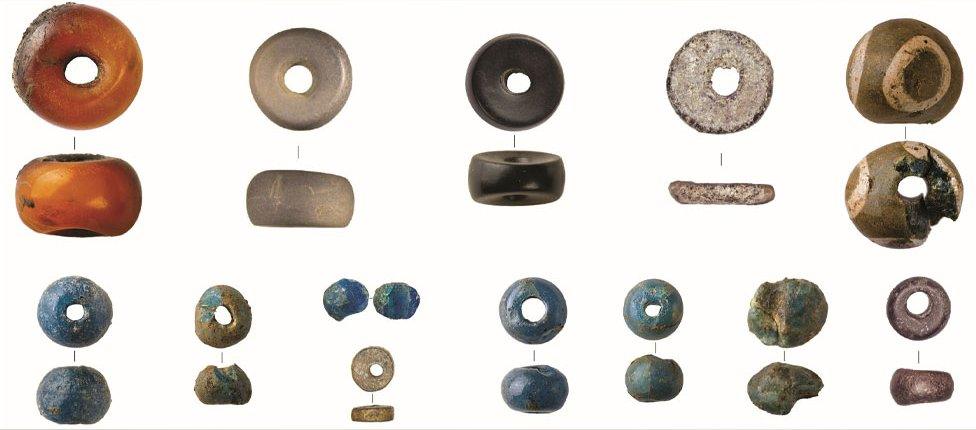
Some of the beads "didn't move very far from where they were found so we know which order they where strung", said Alison Sheridan
Dr Sheridan, who examined the non-glass beads, was "instantly struck by the amber bead because it was so fantastic that it survived at all, as normally amber will burn", she said.
The "slightly charred" find probably came from Scandinavia and may have been made into a bead in Ireland.
"But there is also the faience [glazed ceramic] bead, the only one known from this late Bronze Age period in Britain, while the tin bead is incredibly rare, as it doesn't usually survive, it tends to oxidise," she said.
The dig has drawn comparisons with the Roman city of Pompeii in southern Italy, which was buried under volcanic debris in AD79, because it provides an insight into Bronze Age life just as that era was ending.

Archaeologists said the settlement was situated above a river

Find BBC News: East of England on Facebook, external, Instagram, external and X, external. If you have a story suggestion email eastofenglandnews@bbc.co.uk, external
Related topics
- Published20 March 2024
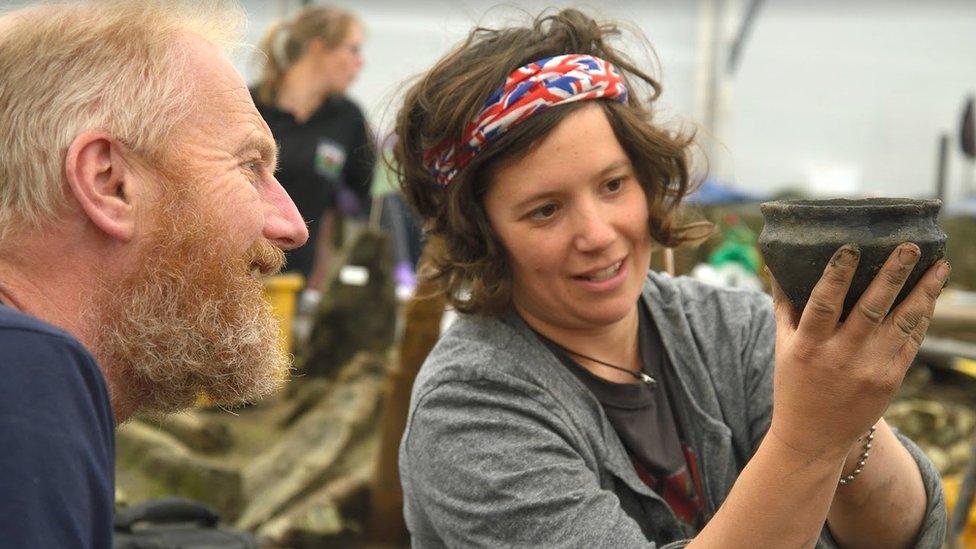
- Published9 March 2023
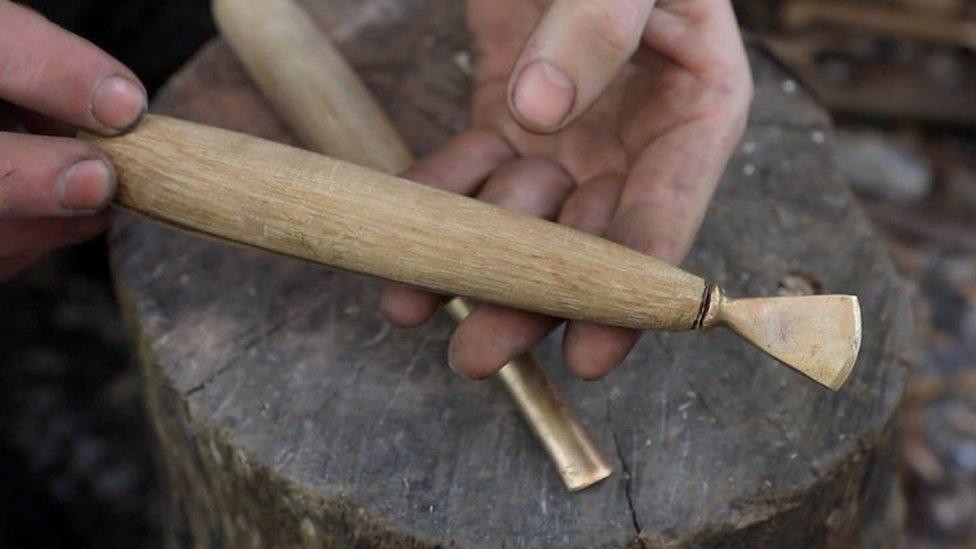
- Published26 July 2022
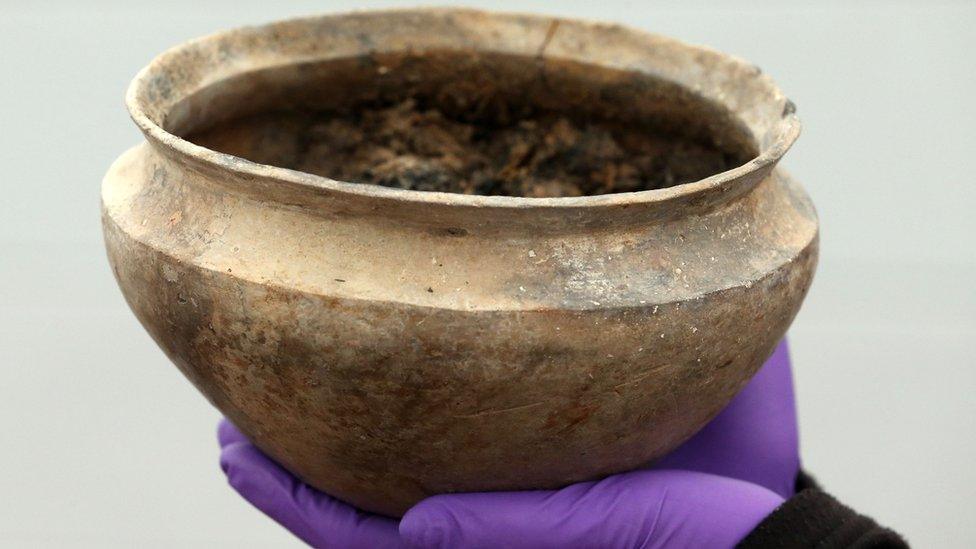
- Published24 March 2021
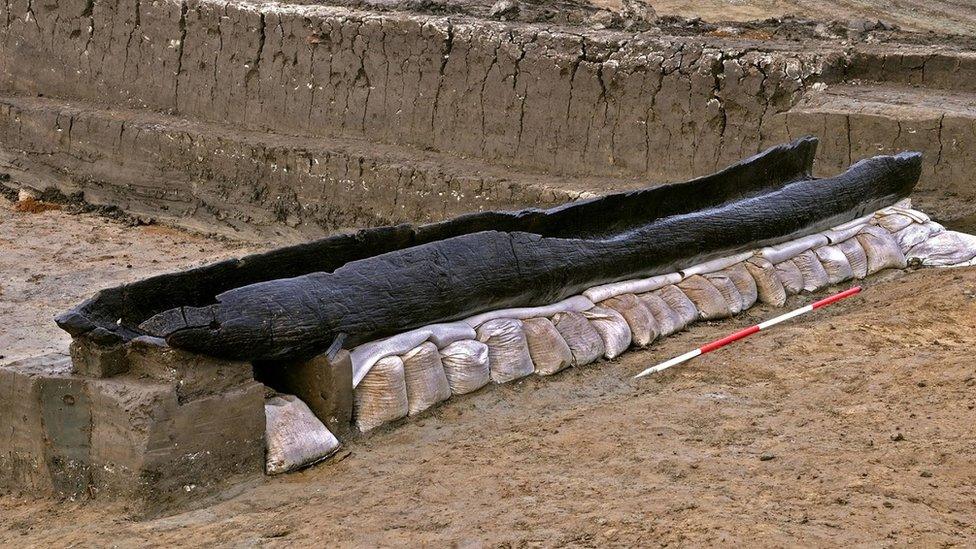
- Published16 August 2019
